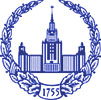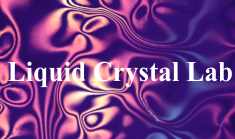

Liquid Crystal Laboratory
Faculty of Physics, Lomonosov Moscow State University

  |
Liquid Crystal LaboratoryFaculty of Physics, Lomonosov Moscow State University |
 |
Staff |
Research Fellows
|
Alexander V. EmelyanenkoHead of Laboratory Doctor of Science Habilitation, Professor of RAS E-mail: emel@polly.phys.msu.ru Scientific Interests: Liquid crystals, polymers, ferroelectric and antiferroelectric smectics, intermediate phases, cholesterics, composite materials, surface effects, phase transitions, unhomogeneous and polydisperse structures, materials for energy-saving displays, optical devices with memory effect, light modulators, molecular-statistical physics, computer simulations IstinaResearcherID (IRID): 1117369 Personal Web Page |
|
Anatoly S. SoninProfessor, Doctor of Science Habilitation, Honored Worker of Science of Russia Scientific Interests: Crystal optics, nonlinear optics of solid crystals, the electro-optics of solid and liquid crystals, thermal films on the basis of cholesteric liquid crystals and polymers, lyotropic and mineral liquid crystals, history of science |
|
Denis N. ChausovLeading Research Associate, Doctor of Science Habilitation, Associate Professor E-mail: d.chausov@yandex.ru Scientific Interests:
SCOPUS: 23983935000 RINC: 155128 ResearcherID: F-1873-2017 ORCID: 0000-0002-1287-6427 |
|
Anatoly V. KaznacheevLeading Research Associate, Doctor of Science Habilitation E-mail: kazna@ineos.ac.ru Scientific Interests: Continuum theory of liquid crystals (LC), interaction of LC with the boundaries, the influence of electric and magnetic fields on LC, LC electro-optics, lyotropic and mineral LC, the electro-optics of composite materials on the basis of polymers and LC. |
|
Andrey V. GolovanovResearch Associate, PhD, Associate Professor Scientific Interests: Magneto- and electro-optics, hydrodynamics of the lyotropic liquid crystals. |
|
Arsen R. JanoevResearch Associate, PhD Laboratory of nonlinear, non-equilibrium and complex systems: https://polly.phys.msu.ru/en/labs/Tribelsky/ E-mail: janoev@polly.phys.msu.ru Scientific Interests: statistical field theory, kinetic theory, liquid crystals, plasma physics, dust plasma, secondary electron emission, nonlinear dynamics Main publications:
|
|
Vadim A. BarbashovResearch Associate, PhD E-mail: barbashov@polly.phys.msu.ru Scientific Interests: ferroelectric liquid crystals Main publications:
|
|
Igor S. ChekulaevEngineer of the 1st category E-mail: chekulaev.I.S@yandex.ru Scientific Interests: electro-optics of liquid crystals, photo orientation, orientation coatings ResearcherID: HGF-3217-2022 |
|
Alexander D. KurilovResearch Associate, PhD E-mail: ad.kurilov@gmail.com Scientific Interests: dielectric spectroscopy and electro-optics of liquid crystals, physical acoustics, magnetic fluids, self-organization of nanoparticles ResearcherID: M-3604-2014 |
|
Daniil S. KravtsovLaboratory assistant E-mail: daniilkravcov27@gmail.com Scientific Interests: dielectric spectroscopy and electrooptics of liquid crystals, X-ray diffraction analysis |
|
Georgy V. ShishkanLaboratory assistant E-mail: shishkan.gv@gmail.com Scientific Interests: ferroelectric liquid crystals IstinaResearcherID (IRID): 553201300 |
|
Anastasia V. GubarevaLaboratory assistant E-mail: gubareva.av1@gmail.com Scientific Interests: dielectric spectroscopy of liquid crystals and magnetic liquids, atomic force microscopy, Raman spectroscopy |
|
Vladimir Yu. RudyakResearch Associate, PhD E-mail: vurdizm@gmail.com Scientific Interests: Polymers, liquid crystals, computer simulation, quantum chemistry, molecular dynamics, the coarse-grained simulation, the dissipative dynamics of particles, Monte Carlo, the mezoscopic methods. Main publications:
IstinaResearcherID (IRID): 2652937 |
|
Sergey A. ShvetsovResearch Associate, PhD E-mail: shvetsov(at)polly.phys.msu.ru Scientific Interests: liquid crystals; nonlinear optics; defects; orientational transitions; light modulation; Dyes; azobenzene; liquid crystalline polymers; photosensitive systems Main publications:
ResearcherID: M-6238-2015 IstinaResearcherID (IRID): 60986699 |
|
Evgeniya S. FilimonovaResearch Associate, PhD student E-mail: filimonova@polly.phys.msu.ru Investigation of polarization in the smectic liquid crystals by the methods of statistical physics. Usually in the theoretical works the value of spontaneous polarization is examined within the framework phenomenological theory, but the molecular aspects of the appearance of spontaneous polarization usually are not considered. In some publications, the appearance of spontaneous polarization was described at the molecular level, but the distribution of molecular dipoles was obtained as a result of expansion of polarization in Taylor series, and thus, the role of molecular theory was reduced to the determination of coefficients in the phenomenological theory. At the same time, for the simplest tilted smectic phases, synclinic and anticlinic, it is possible to find the distribution of molecular dipoles by the method, analogous to Mayer- Saupe theory. In our study, the origin of the spontaneous polarization in the synclinic and anticlinic smectic liquid crystals is obtained within the framework of molecular- statistical theory. The influence of interaction of molecules, external electric field and molecular bent on the value of polarization is studied. |